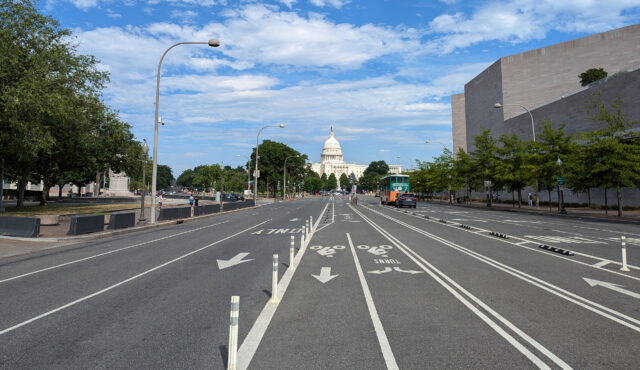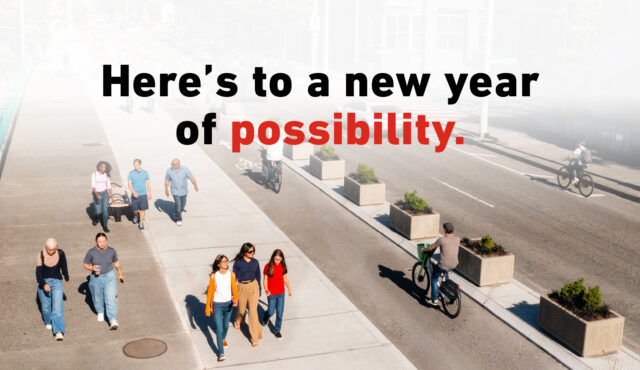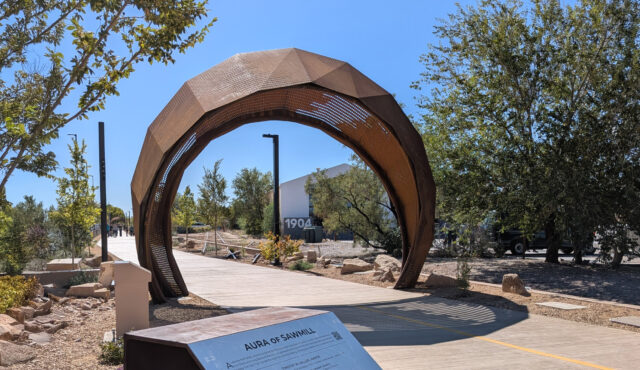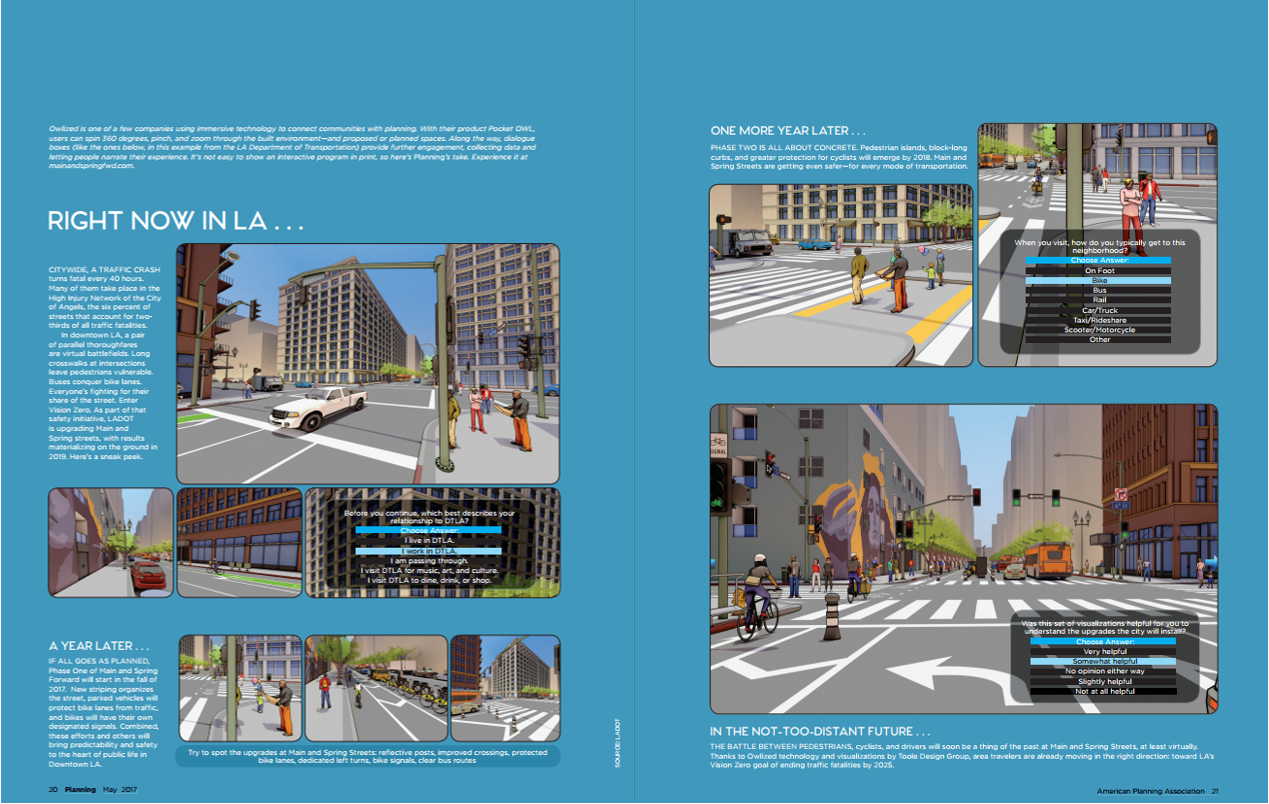
The City of Los Angeles believes that everyone “…should be able to move freely and feel safe on [their] streets.” Mayor Eric Garcetti has made a public commitment to eliminate all traffic deaths in Los Angeles by 2025. Vision Zero LA brings the Los Angeles Department of Transportation together with the LA City Council, police department and local advocates to identify streets where targeted investments can make a big impact on safety for all road users.
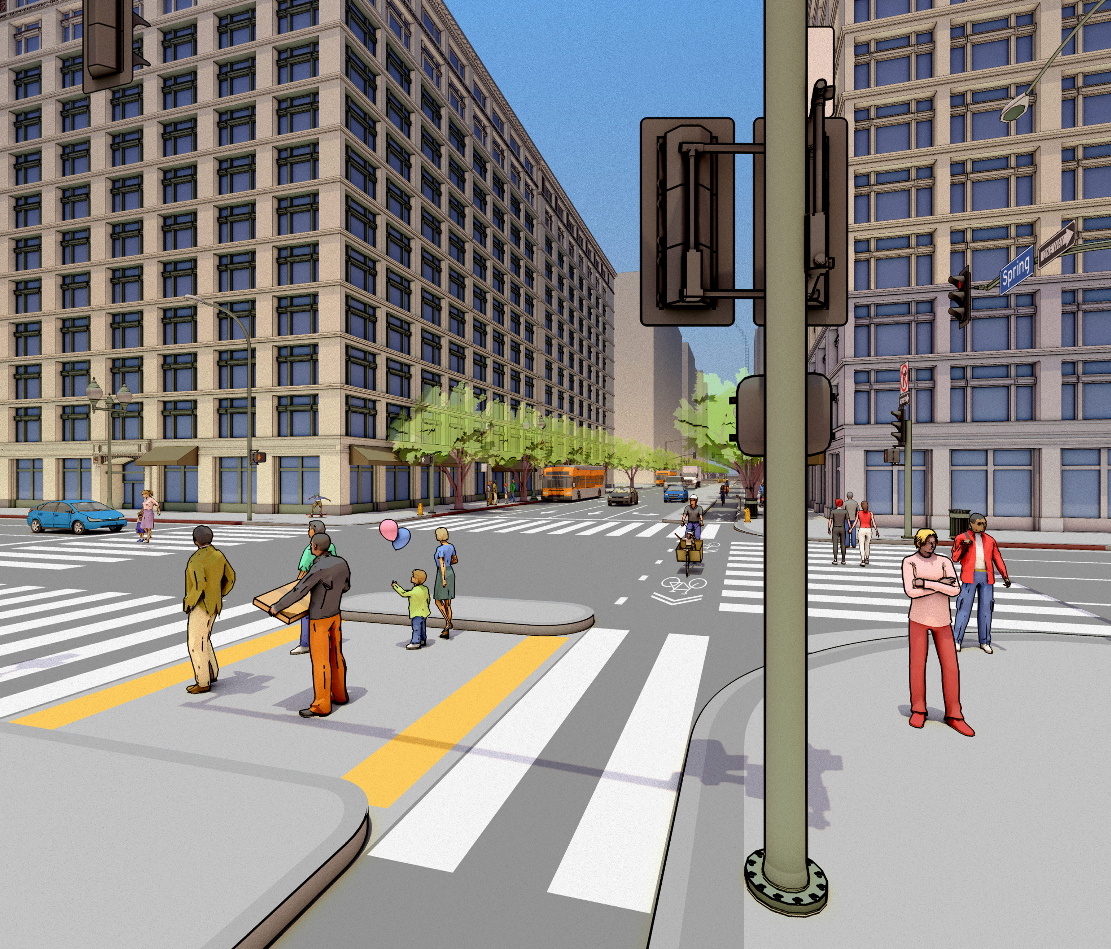
One of these areas is in Downtown Los Angeles, where Spring Street and Main Street transverse the heart of the city. LADOT chose Toole Design Group to develop new street design concepts that would create safe connections for all users while enhancing transit performance for the many critical bus routes that traverse both streets.
Led by Bill Schultheiss, P.E., Ashley Haire, Ph.D, P.E., and Jeremy Chrzan P.E., PTOE, LEED AP, a team of TDG designers and engineers came to LA for a week-long design charrette to assist LADOT staff in implementing best practices for active transportation on Spring and Main Streets. This included safe intersection design, handling high-volume driveways, and managing high bus ridership along the corridor. After assessing several design concepts, LADOT and TDG staff finalized a combination of design elements that provide safer bicycle facilities, decrease crossing distances for pedestrians, and maintain curbside access for buses within the existing curb lines.
To help people visualize what these changes would look like, our technical staff worked with virtual reality firm Owlized to create a public engagement tool that lets people explore the proposed changes to Spring and Main streets. Together, they developed MainandSpringFwd.com, using a mobile-optimized product called Pocket OWL. This portable, on-demand tool allows people to experience how the intersection of Spring St & 6th St will look and feel after the implementation of key design concepts from their screen. TDG planner and designer Peter Robie created the graphics shown in the virtual simulation based on the actual designs created for LADOT, transforming lines on paper into a virtual representation of the future of Spring and Main Streets for each phase of the project.
Los Angeles City Councilmember Jose Huizar and LADOT launched the Pocket OWL website in advance of the first public outreach event for the project. In addition to creating an immersive experience of the design concepts, the tool also collects survey responses about the project from viewers. Pocket OWL magnifies the traditional public outreach approach and allows viewers to get a walkthrough of the planned designs and compare them to the current streetscape.
The visualization tool and survey will also be available at a custom installation to be placed at the intersection using a virtual reality kiosk. Though it looks like a classic “tower viewer”, it gives users a glimpse of the future and allows LADOT and its partners to show the possibilities of transformative projects from an individual perspective.
